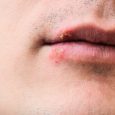What Swollen Blood Vessels On Your Nose Can Be a Symptom Of
Telangiectasia is the medical term used to refer to spider veins that appear on the face including the nose. The widening of these veins and breaking of the capillaries occurs gradually and in a cluster. These veins are without a doubt uncomfortable and usually unattractive. Most individuals who have them prefer to get rid of them. The process of getting rid of them includes damaging the inflamed blood vessel and forcing it to scar or collapse on itself. This will help to reduce the marks and patterns on the nose.
While in most cases inflamed veins on the nose is a benign condition, sometimes it acts as an indicator of an underlying health problem. For instance, hereditary hemorrhagic telangiectasia, a rare genetic version of the condition, results in the swelling of blood vessels on vital organs including the liver which could result in death. If the inflamed blood vessels inflame and burst, bleeding follows.

Symptoms of Telangiectasia
As stated above, this condition is uncomfortable for most people. And while they may not be life-threatening, most people hate the way they look on their face. They start small and with time become bigger and worse courtesy of some health and beauty products that irritate the skin. Such products include sponges and abrasive soaps.
Symptoms are:
- Pressure and pain in the inflamed venules
- Unsightly red pattern and marks on your nose and skin
- Itching
Symptoms of Hereditary hemorrhagic telangiectasia include:
- Seizures
- Frequent nosebleeds
- Small strokes
- Red blood stains in stool
- What causes Telangiectasia?
Honestly, the true cause of this condition is still unknown. However, studies and research conducted believe there are several causes that contribute to the development of this condition. These include environmental or genetic causes or even both. In some cases, it develops as a result of excessive exposure to high temperatures or the sun.

Other potential causes of inflamed blood vessels on the nose
- Pregnancy: pregnancy is a beautiful process. However, it takes a huge toll on the body. A lot of pressure is applied to the blood vessels during a pregnancy, especially in the last trimester.
- Alcoholism: though happening gradually, alcoholism can affect how blood flows in the veins and capillaries. Additionally, it can lead to liver diseases.
- Constant use of corticosteroid: these, with time, causes the skin to thin and weaken leading to the appearance of the spider veins
- Dermatomyositis: this condition inflames the muscles and the skin as well
- Scleroderma: results in the contraction and the hardening of the skin
- Systemic lupus erythematosus: this increases the skin’s sensitivity to extreme temperatures and the sun.
As for Hereditary Hemorrhagic Telangiectasia, it is genetic. Individuals with this condition most often than not inherit it from one of their parents. There are 5 genes that are thought to be the cause of this type of telangiectasia.
Individuals at risk of developing telangiectasia
This condition/skin disorder is common even in individuals considered healthy. However, some individuals are more risk of developing this condition than others. Some of these individuals include people who:
- Misuse alcohol
- Are pregnant
- Work long hour under the scorching sun
- Stand and sit all day
- Are well advanced in age
- Have dermatomyositis, scleroderma, rosacea and systemic lupus erythematosus

How telangiectasia is diagnosed
Doctors usually rely on the clinical signs of the condition to diagnose it. Telangiectasia on the nose is easily detected especially given the red threadlike patterns and lines it causes on the nose. In most cases, doctors will need to ensure that there isn’t an underlying disorder that needs to be dealt with. Some of the diseases associated with telangiectasia include:
- HHT: an inherited blood vessel disorder on the skin and the internal organs that can lead to excessive bleeding
- Spider angiomas: this is an abnormal clustering of blood vessels close to the skin
- Sturge-Weber disease: this is a rare disorder that results in a nervous system issue and port-wine stain birthmark
- Xeroderma pigmentosum: this is a rare condition that causes the eyes and skin to be sensitive to UV light
Conclusion
Treatment of telangiectasia will improve the appearance of the nose and skin overall. Those who undergo treatment can expect to live normally following the recovery of the treatment. The nose, compared to other body parts and organs is easier to treat.








